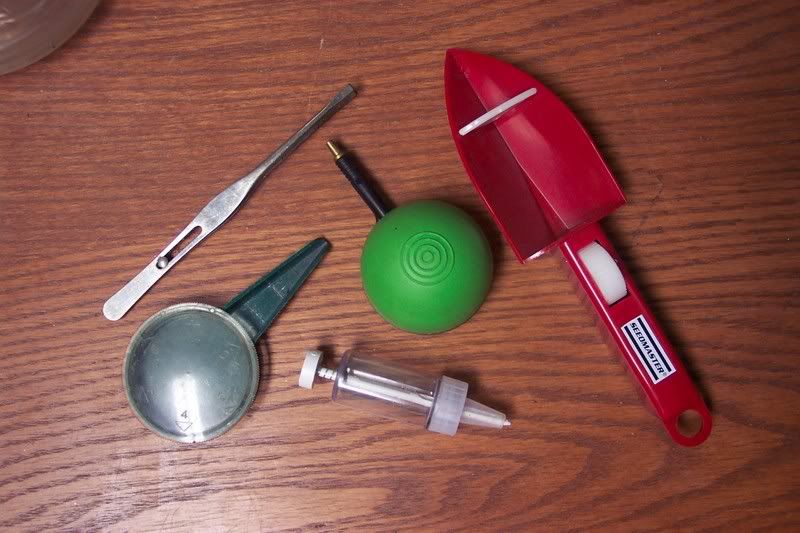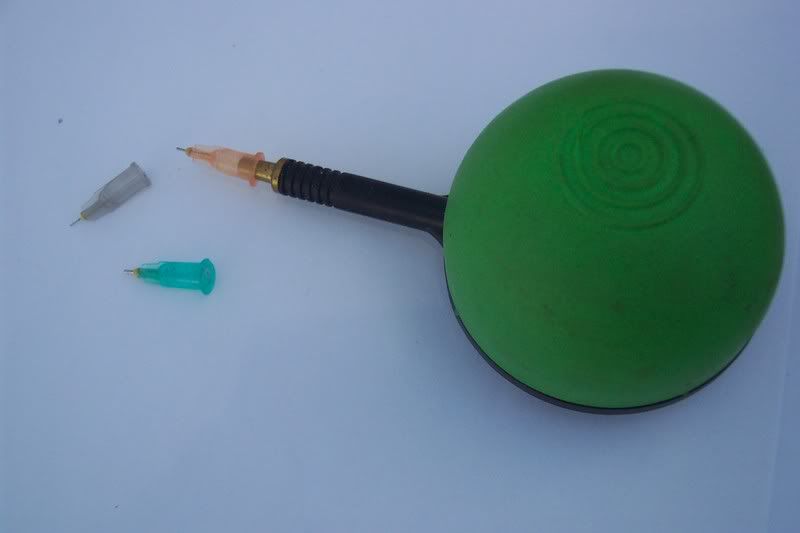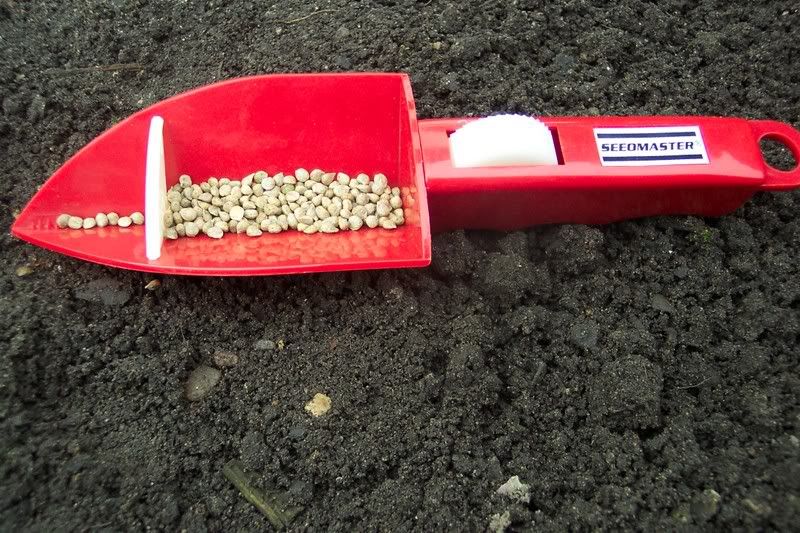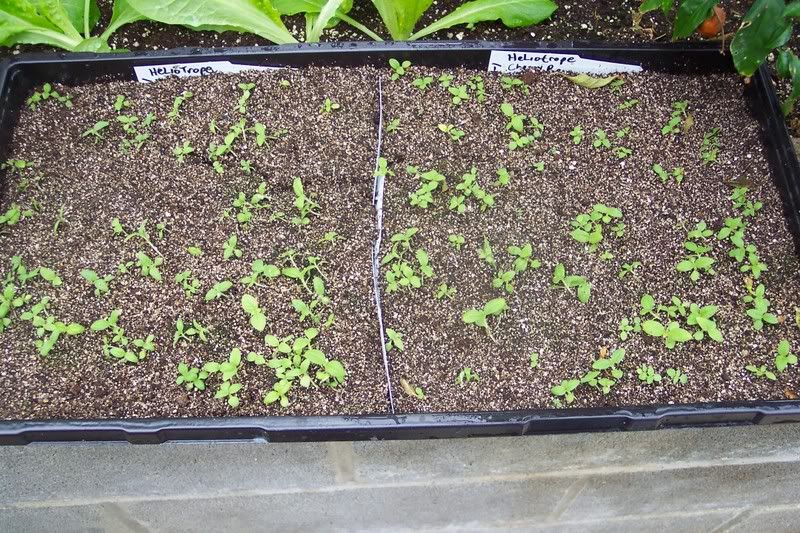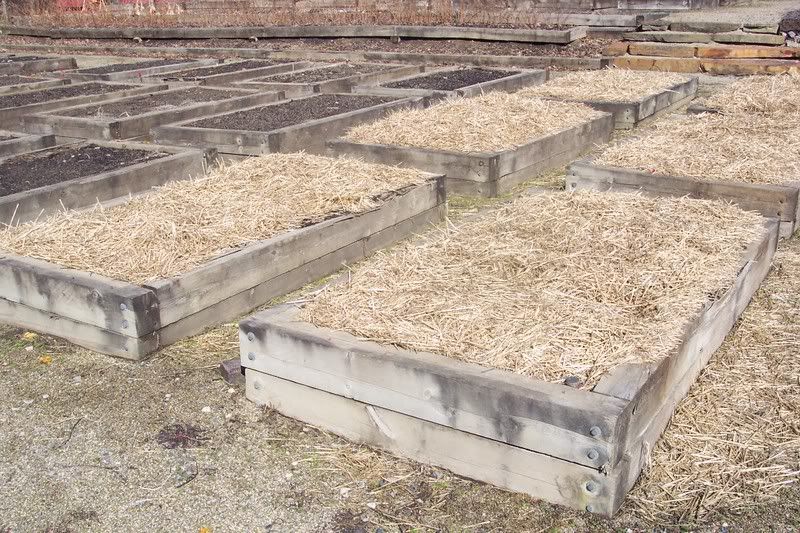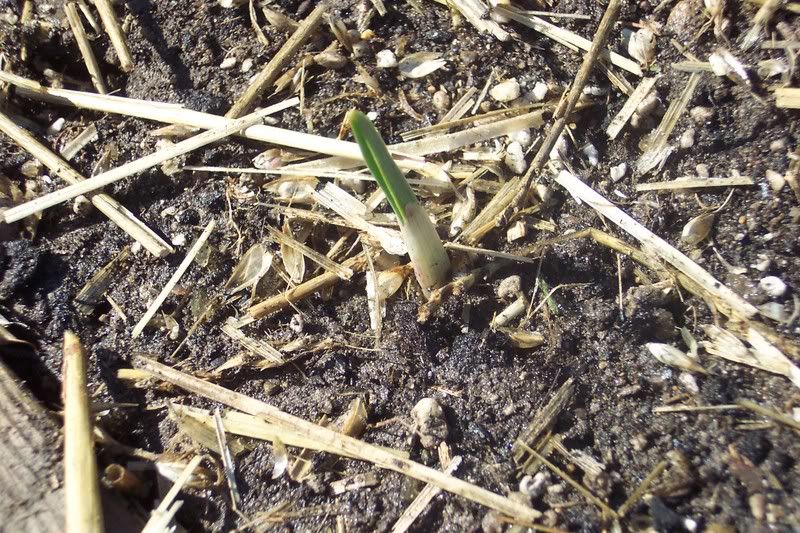Every spring for a number of years now, I and my co-worker, Adrienne, have been putting together a Spring Display during March in the conservatory of the Matthaei Botanical Gardens. Adrienne grows the plants and bulbs in a back greenhouse, timing them so they bloom just when we want them to. Then I and my volunteers put the display together using the gorgeous plants and blooms.
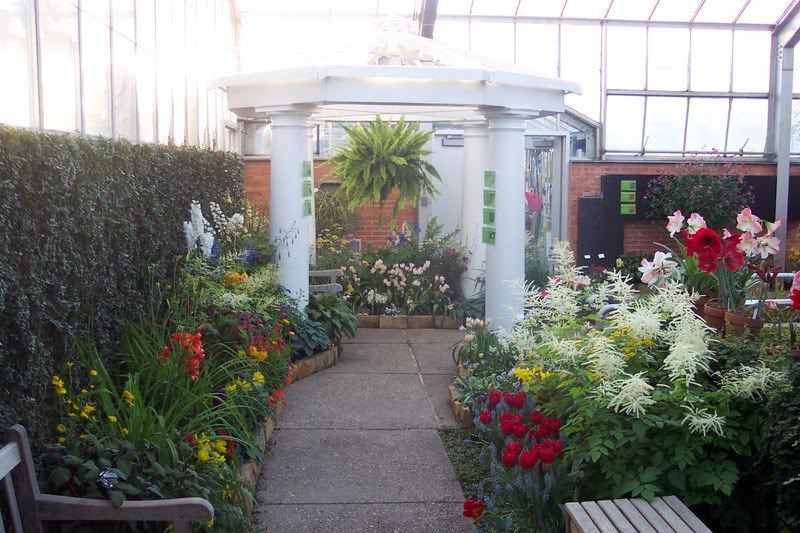
This year’s theme has been “Heirloom Varieties”. We had a classic red tulip called ‘Coleur Cardinale’; an old time all yellow daffodil called ‘King Alfred’; a tiny species daffodil (which means its the same as what was found in the wild , in this case in the 1600′s) with a common name of Petticoat or Hoop Daffodil. It was only 6-8 inches tall with a little trumpet 1/2 -3/4 inches wide with a little frill around it. It was darling.
We also had a yellow tulip with red splotches called ‘Kaiserin Kroon’ and another yellow and red tulip called ‘Rembrandt’. Both of these were antique varieties.
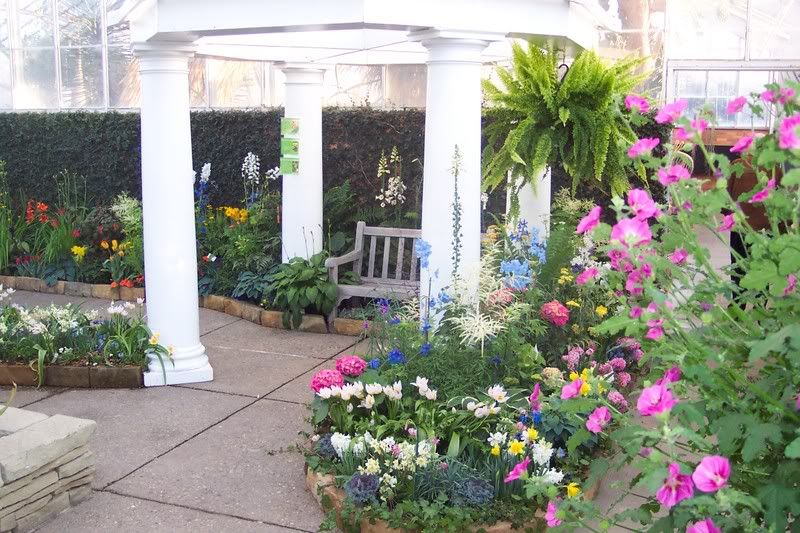
The background greenery of the display was hostas, Japanese Ferns, Ostrich ferns and a perennial called Goatsbeard, that I would recommend for your perennial garden. It has a white fluffy flower, reminiscent of an Astilbe flower but looser and fluffier. It does like a moist spot so choose accordingly.
We had 4 varieties of hyacinth which scented up the conservatory. One variety was called ‘Macaroni” and another called ‘City of Harlem’. Tulips and hyacinths last only a week in the warmth of the conservatory, so we changed the dispaly every week and brought in fresh blooms. Designing with flower colors is one of my favorite things to do, so I enjoyed the whole process. Of course I have 3 to 4 volunteers one day a week that help with the redo. We all savored the first touch of spring.
If you are interested in antique varieties of bulbs, go to ‘Old House Gardens‘ from Ann Arbor for a wide variety. They have summer bulbs such as lilies that you can order now instead of having to wait till fall.
Happy Spring! Bye now, Judy
